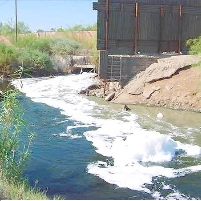Supreme Court Rulings Open Loopholes for Water Polluters
Tuesday, March 02, 2010

Thanks to a conservative shift in the U.S. Supreme Court, government regulators are now limited in enforcing the nation’s toughest water pollution law, a development that has put the drinking water of millions of Americans at risk.
An investigation by The New York Times found that the U.S. Environmental Protection Agency (EPA) is unable to go after some businesses that have dumped oil, carcinogens and dangerous bacteria into lakes, rivers and other waterways. An estimated 1,500 major pollution investigations have come to a halt in the last four years.
The reduced enforcement has occurred because of two rulings by the Supreme Court that reduced the scope of the Clean Water Act by redefining the term “navigable waters,” olid Waste Agency of Northern Cook County v. United States Army Corps of Engineers (2001) and Rapanos v. United States (2006). Now, waterways that are entirely within one state, creeks that periodically dry up, and lakes unconnected to larger water systems are beyond the jurisdiction of federal regulators.
“We are, in essence, shutting down our Clean Water programs in some states,” said Douglas Mundrick, an EPA lawyer in Atlanta. “This is a huge step backward. When companies figure out the cops can’t operate, they start remembering how much cheaper it is to just dump stuff in a nearby creek.”
James Tierney, the New York State assistant commissioner for water resources, said entire watersheds that feed into New York City’s drinking water supply have been left unprotected by the actions of the high court.
-Noel Brinkerhoff
Rulings Restrict Clean Water Act, Foiling E.P.A. (by Charles Duhigg and Janet Roberts, New York Times)
- Top Stories
- Unusual News
- Where is the Money Going?
- Controversies
- U.S. and the World
- Appointments and Resignations
- Latest News
- Trump to Stop Deportations If…
- Trump Denounces World Series
- What If China Invaded the United States?
- Donald Trump Has a Mental Health Problem and It Has a Name
- Trump Goes on Renaming Frenzy






Comments